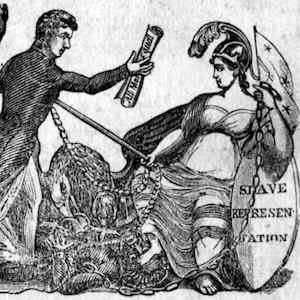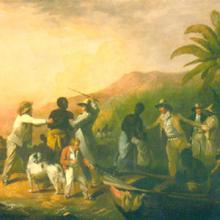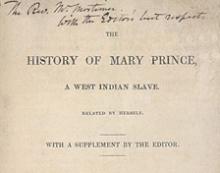Browse
Slavery

Review
Slaves and the Courts, 1740-1860
This site offers 105 documents published between 1772 and 1889 that deal with the legal experiences of slaves and the legal aspects of slavery in the United States and Great Britain.
Review
Afro-Louisiana History and Genealogy, 1718-1820
The Slave Database offers information on more than 100,000 slaves and the Free Database has records on more than 4,000 slave manumissions.Review
Excerpts from Slave Narratives
This website is unique in the growing number of Internet sources that explore African experiences and slavery. Teachers will find Mintz’s documents invaluable in promoting classroom discussion.
Review
Africa Online Digital Library
The site’s stated goal is the implementation of emerging best practices in the “American digital library community” in an African context, and it does not disappoint. Indeed, the site demonstrates a rare combination of scholarly sophistication, ease of use, and broad appeal.
Review
American Centuries
A section of the site called "In the Classroom" offers numerous lesson plans for elementary and middle-school teachers, some written by museum employees and some by schoolteachers themselves, using materials in the online exhibits.
Review
The Story of Africa
Each segment provides a selection of quotes from primary sources that illuminate specific issues. There are many gems to mine. They range from original lyrical quotations that capture the imagination...to arresting images of initiation rituals and political power.
Review
United Nations Children’s Fund (UNICEF)
Teachers of modern history and regional or world geography will find a wealth of primary sources on this site that can contribute to filling in a realistic picture of children's situations and the economic, public health, scientific, social, cultural, and political issues that affect them, as
Teaching
Source Collection: Slavery and the Haitian Revolution
Since the revolutionaries explicitly proclaimed liberty as their highest ideal, slavery was bound to come into question during the French Revolution. Even before 1789 critics had attacked the slave trade and slavery in the colonies.

Review
Internet Ancient History Sourcebook
This site was designed to provide classroom teachers with an extensive, well-organized collection of ancient Mediterranean literary texts and, to a lesser extent, art and archaeological sources.
Teaching
Short Teaching Module: Slavery, Labor, and Gender
In this case study, developed for a lower-division lecture class on “World History 1400-1870,” students explore gender though a primary source the personal account, “The History of Mary Prince, A West Indian Slave Related by Herself.” This first-person account was written by British abolitionists